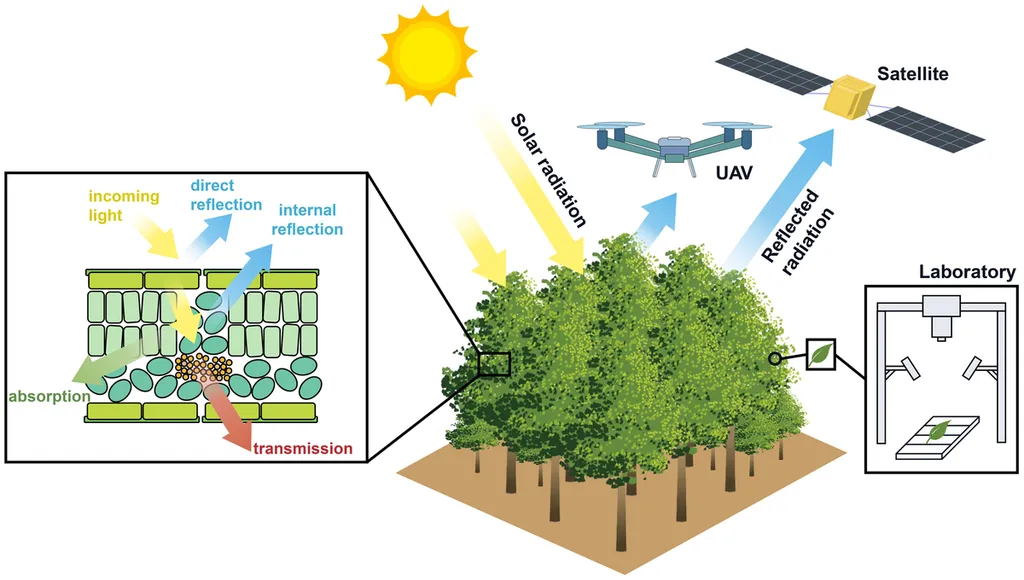In the ever-evolving world of precision agriculture, a groundbreaking study published in the journal *Agriculture* is set to revolutionize how tea plantations monitor and manage one of their most formidable foes: Tea Anthracnose (TA). This fungal disease, caused by the genus *Colletotrichum*, has long been a significant threat to global tea production, causing substantial economic losses. However, a team of researchers led by Qimeng Yu from the College of Artificial Intelligence at Hangzhou Dianzi University in China has developed a novel approach that promises to make disease monitoring more efficient and accurate than ever before.
The study introduces a cross-temporal, generalizable disease monitoring approach based on UAV (Unmanned Aerial Vehicle) multimodal data coupled with relative-difference standardization. This method addresses the critical challenge of variations in illumination, background, and meteorological factors that often undermine the stability of cross-temporal data. “Our approach significantly reduces the relative differences in cross-temporal features, making the data more reliable and consistent,” explains Yu.
The researchers collected multispectral, thermal infrared, and RGB images from an experimental tea garden and extracted four classes of features: spectral (Sp), thermal (Th), texture (Te), and color (Co). They then used the Normalized Difference Vegetation Index (NDVI) to identify reference areas and standardize features. This standardization process proved to be a game-changer, enhancing the accuracy and reliability of the data.
One of the most innovative aspects of this study is the development of a vegetation–soil relative temperature (VSRT) index. This index exhibits higher temporal-phase consistency than the conventional normalized relative canopy temperature (NRCT), providing a more robust metric for monitoring disease progression.
The team constructed a multimodal optimal feature set through sensitivity analysis based on the four feature categories. They then evaluated disease classification performance using three machine learning algorithms: K-Nearest Neighbors (KNN), Support Vector Machine (SVM), and Multi-layer Perceptron (MLP). The results were impressive, with the “Sp + Th” combination achieving the highest accuracy of 95.51%. Notably, KNN outperformed SVM and MLP, demonstrating its potential as a simple and effective tool for disease classification.
The implications of this research for the agriculture sector are profound. By providing a practical solution for efficient and generalizable disease management, this study could significantly reduce economic losses and improve the sustainability of tea production. “Our method offers a robust and accurate way to monitor Tea Anthracnose, which can help farmers make informed decisions and take timely action to protect their crops,” says Yu.
Looking ahead, this research could shape future developments in the field of precision agriculture. The integration of UAV-based multimodal monitoring with advanced machine learning algorithms opens up new possibilities for disease detection and management. As the technology continues to evolve, we can expect even more sophisticated and efficient solutions to emerge, further enhancing the resilience and productivity of agricultural systems.
In conclusion, the study led by Qimeng Yu from the College of Artificial Intelligence at Hangzhou Dianzi University represents a significant advancement in the field of precision agriculture. By addressing the challenges of cross-temporal data variability and developing innovative indices and algorithms, the researchers have paved the way for more effective and efficient disease monitoring in tea plantations. This work not only highlights the potential of UAV-based remote sensing but also underscores the importance of interdisciplinary collaboration in driving agricultural innovation.

